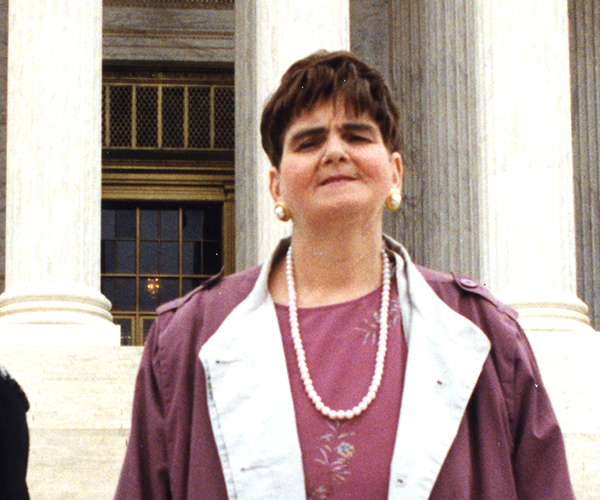The Olmstead Implementation Office (OIO) blog shares information that might be important to Minnesotans with disabilities. You can find interviews, stories, new research, information about programs for people with disabilities, and more at the blog.
OIO also sends out news and resources through the newsletter. Sign up to receive the email newsletter.
6/18/2025 11:15:21 AM
The lead plaintiffs of the Olmstead decision were Lois Curtis and Elaine Wilson. They were two women with mental illness and developmental disabilities who were confined to a psychiatric unit at the Georgia Regional Hospital. Although mental health professionals said they were ready to live in community-based programs, the state did not move them from the institution. They filed a lawsuit under the Americans with Disabilities Act (ADA) to be released from the hospital. Their determination for a life in the community led to Olmstead v. L.C. – also known as the Olmstead decision.
June 22 is the anniversary of the Olmstead decision. It is important to center these two women whose tenacious fight for their rights also freed millions of others. Currently, Minnesota’s Olmstead Plan is being updated through a co-creation model. The state is working alongside consultants with lived experience to write an updated Olmstead Plan. We are excited for this next phase of the plan and recognize this work would not be possible without Lois and Elaine’s advocacy 26 years ago.
 Elaine Wilson
Elaine WilsonElaine Wilson was born and raised in Georgia. When she was six, she became seriously ill and was hospitalized with a high fever. The fever caused developmental delays and mobility loss.
Elaine started struggling with school. Her mother brought her to a doctor who said that Elaine had brain damage and recommended institutionalization as the only way to provide for Elaine's needs.
Elaine was transferred to Central State Hospital in Milledgeville during the early 1970s, where she resided until the early 1980s. Elaine's life became a cycle of personal care homes and hospitals. "When I was in an institution, I didn't like myself," Elaine shared in an interview. "I was trapped. I had no hope. I thought, Oh God, Oh God - when am I ever going to leave here?"
Although it took many years and 36 institutions, Elaine Wilson finally rejoined the community. After Olmstead, she was able to live in her own home with a caretaker. She developed an interest in cooking, was active in her church, and engaged in advocacy activities. Elaine died in December 2004; she was 53 years old.
 Lois Curtis
Lois CurtisLois Curtis was institutionalized as a child. For the next two decades, she was forced to live in segregated housing, away from family, friends, and community life. Curtis hated living in the institution. She knew she should be living life on her own terms.
Lois spent her years after Olmstead living independently in her chosen community. She was an artist whose artwork has hung in the White House and in galleries around the country. In 2011, to celebrate the Olmstead Decision anniversary, Lois presented President Obama with a self-portrait of herself as a young girl, part of a series she did because she had no photos from her childhood in state institutions.
In an interview in 2014, she shared in a written letter: “Hello to all the people living in institutions, I remember you. Give me a prayer. Sometimes I feel good about my life. When I feel bad about my life, I name my country, sing the gospel, and bring my mind back home. I will sing with you again. Have a beautiful day. Love, Lois.”
Lois Curtis died on Nov. 3, 2022, at the age of 55. In an interview given before her death, she shared, “My name is Lois Curtis. … I’m glad to be free.”
Photos used by permission. © Tom Olin – Tom Olin Collection